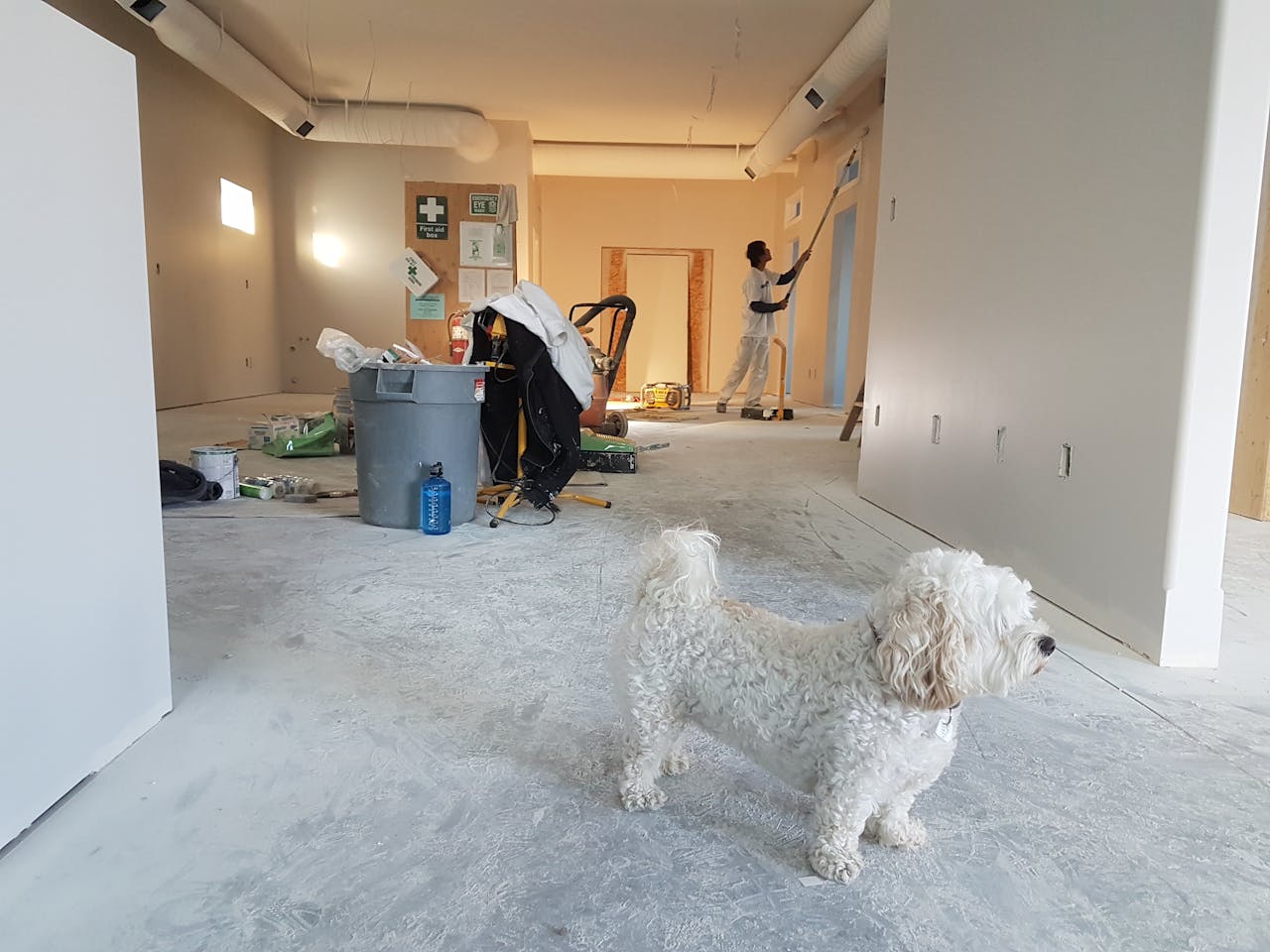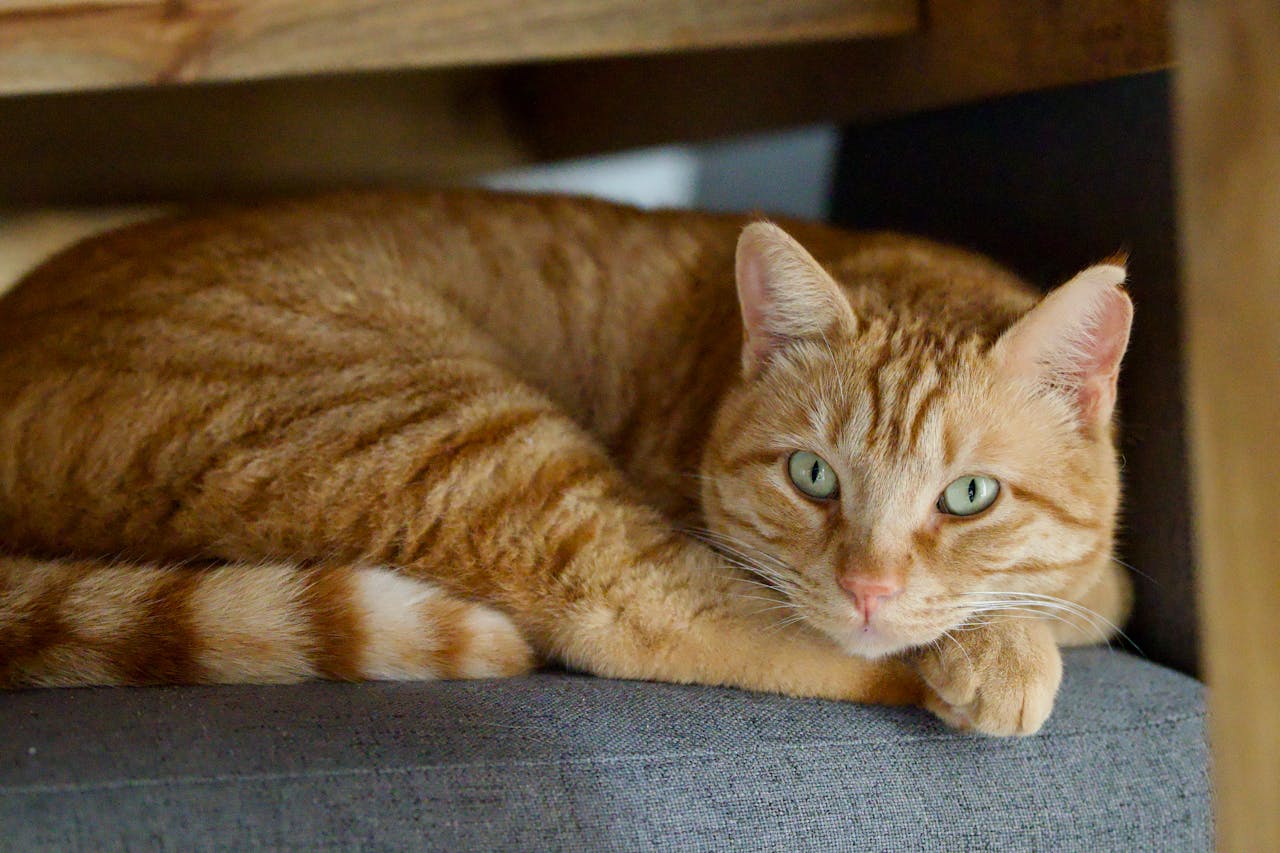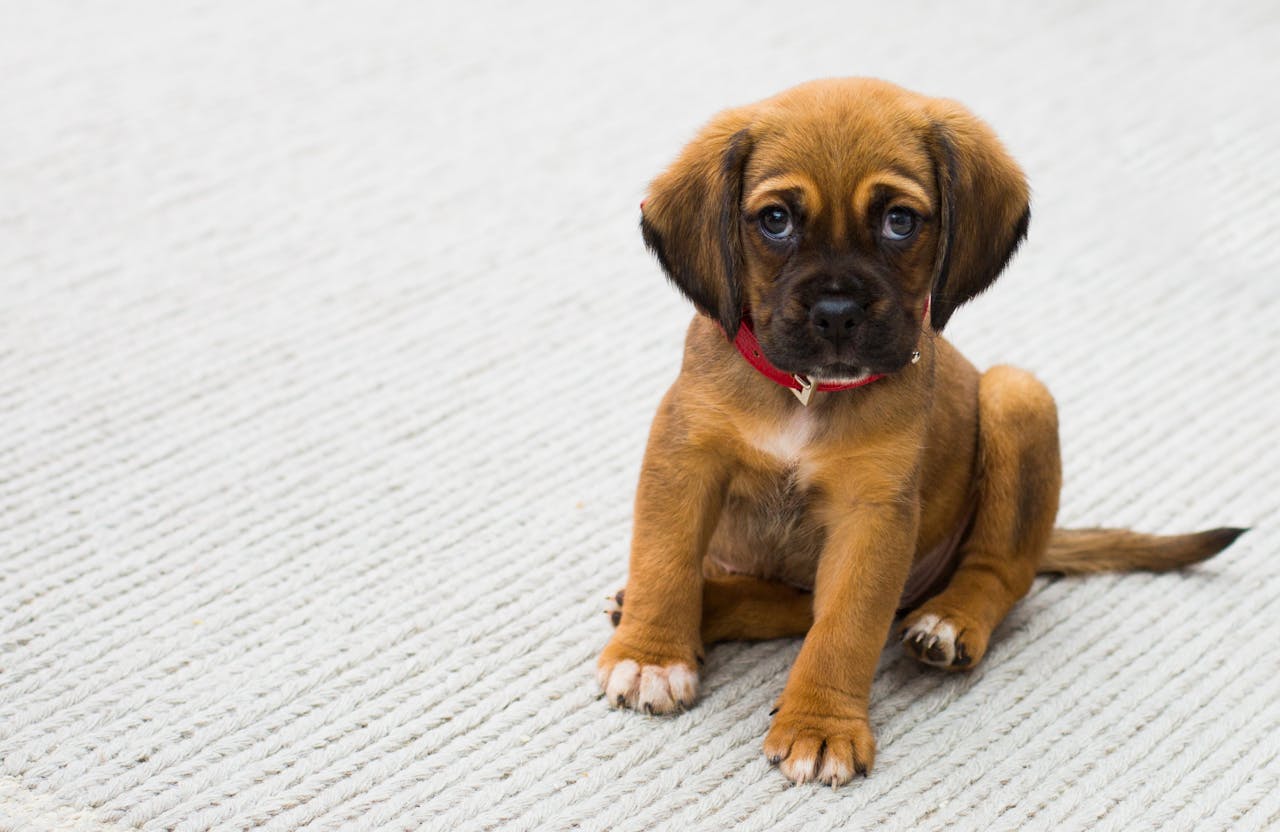Woof, Woof! Cleaning Tips For Dog Owners
I can fetch your slippers and newspaper, take you for frequent walks and defend your home from intruders, but one thing I have never quite mastered is cleaning up after myself. Sorry, Boss. Sorry, Mum. But I don’t have the equipment. I will bury any extra biscuits and bones in the garden, though. Will that do?
You have to tidy me up and tidy up after me, but I can give you a few tips and hints to make it easier. Then I’ll bring you your slippers and the paper so you can have a well-deserved sit-down.
First of all: me. I do hate having a bath. Yes, I like splashing through dirty water, but that warm stuff with those bubbles in… well, you obviously can’t smell exactly what those artificial scents smell like with your substandard noses. All you smell is the nice flowery bits. I can smell the chemicals, and they can make my skin itch! However, you can make a natural shampoo for dogs out of gentler ingredients, which you can do by mixing 1 cup of water with one teaspoon liquid soap or soap gel (preferably castile soap), one tablespoon aloe vera gel and ½ teaspoon olive or some other vegetable oil. Shake this together and use it like any other shampoo when you wash the dog. I will still hate it, but it will stop some of the itches.

How do you clean the dog’s bed? I won’t like you doing it much, as I like the comfortable homely smell. If you have given me a basket filled with cushions and the like, take them out and give them a good shake. Some linings are washable and can be put through the washing machine, so make the most of this if you have them. The same goes if you gave me old blankets and towels for my bed (I like these even better – they smell of you and make me feel like part of the pack). To wash the basketwork, use warm, soapy water and a soft, bristly brush such as a toothbrush. Work all over the basket work, but concentrate on the visibly dirty bits, as you probably have better things to do with your time, like taking me for a walk. Spray a baking soda solution dissolved in water over the basket to remove any smells (hey, I worked hard to get it smelling just right!).
And… oops. You must clean the carpet if I make a mess on it. Well, I’m only a puppy, or did you forget to let me out? What was I supposed to do? At least I do it right out in the open where you’ll see it easily – or step in it – rather than hiding it in a corner like a dumb cat.
If I make a mess, it is important to clean the carpet immediately, or else the smell will remain and give me the idea that it’s OK to go there. The same goes for cleaning wood floors. Tile and lino floors are less urgent smell-wise, but you probably want to clean hard floors promptly if they’ve got dog poo or pee on them.
To clean dog poo from the carpet:
- Remove the solid lumps in a paper towel or a generous wad of loo paper and flush it down the loo.
- Dab warm water over the site and apply a bit of ordinary soap to the bristles of a medium-stiff scrubbing brush.
- Scrub over the site of the poo and get a good foam going, which will lift the residues out of the carpet.
- Rinse the brush frequently.
- Blot the site mostly dry with an old towel.
- Use an old towel to blot up as much as possible for dog pee, then use the scrubbing brush method.
Lastly, after blotting the site mostly dry, sprinkle baking soda over it to absorb the smell and prevent a repeat offence.
Meow! Cleaning Tips For Cat Owners
Right, let’s get things clear at the start. I am the cat, and I am the owner, not you. This should help you make your house fit for any self-respecting cat to live in and give you instructions on how to clean up after me.
Do not attempt to bathe me. I do an excellent job of cleaning my fur (unlike those barbaric dogs) and will give you a good scratching if you try it.
First and foremost, cleaning the feeding dish. If I have decided that my food is not fit for feline consumption and have left it, dispose of it thoughtfully in the compost and wash the bowl as you would your plates and cups: in the dishwasher or by hand. Make sure you rinse it well. I like to haul my food out of my plate from time to time, so I appreciate it the way a gourmet should. If you are too lazy (the service around here is despicable!) to get down on your hands and knees to scrub the floor after me, you can put my dish on a mat that washes down easily. A red carpet would be appropriate, but you can use a vinyl mat if necessary.

Next, floor cleaning. Here, I am talking about the carpet. I like to sleep on the carpet, and if sunlight and warmth are adequate, you must clean up after me with the vacuum cleaner, especially when I am moulting. And you must also vacuum the floor to ensure that fleas do not trouble my slumbers. Vacuuming beats any amount of flea bombs with hideous chemicals – is it any wonder I pay a state visit to the neighbours when you want to throw one of these horrors around? You humans can’t smell what those things are like! And when you vacuum, don’t use those artificial scents, as they are not a patch on natural scents. I think the house smells perfect with just plain fresh air (open the window to get this and give me an alternative exit when I like it). If you must, add a little essential oil to the vacuum cleaner bag or filter. But why doesn’t anyone make catnip essential oil? Vacuuming is also the best way to remove my hair from sofas and the soft chairs I love. But you will probably want to check the back of the couch for odds and ends such as pens, paper clips, coins and the remote control before you start vacuuming. Use the thin attachment on the hose for sucking up dirt, not that one that’s so big a mouse could run up it.
If I do get fleas, please use natural cleaning methods to kill them rather than that stuff that makes my skin itch. Essential oil of penny royal works. If you can’t persuade me to roll in a patch of the herb, hold a few sprigs in your hand while you stroke me so the smell gets into my fur. Alternatively, dab some of the essential oil onto a brush or a grooming mitt. I appreciate an aromatherapy massage, too. Thank you.
Lastly, cleaning the kitty litter tray. Do this regularly, or I will use other places around your home. If you dislike the smell (imagine what it smells like to my nose), sprinkle a little baking soda inside the tray. You could, of course, fill the entire tray with baking soda, but as you do not have the wealth of the Pharaohs (oh, how I wish for the good old days in Egypt!), ordinary kitty litter will do. Sand does not absorb smells but suits ME. If you want to be naturally minded, use wood ash (never wood ash), as this also absorbs smells. All kitty litter, ash or commercial, can be put into the compost heap. If you have a garden, do not bother with a kitty litter tray, as I will use the garden – but I won’t dig up your seeds and young plants if you scatter pepper where you don’t want me to go.
General Pet Cleaning Tips
Some must-have tools/items are:
- Lint brush
- Pet rake
- Tape
- Sponges
- Baking soda
- White vinegar
- Paper towel
Most pet supply stores will have the items you need for sale, and they are pretty inexpensive and will last for years.
Removing urine stains and smell
Baking soda is your best friend when removing urine from carpets and upholstery.
First, dampen some paper towels or a rag with water and use them to wipe the urine up. You want to do this as soon as possible so that the urine does not penetrate the material. Next, saturate the area with a solution of water and white vinegar. [Use one teaspoon vinegar to one quart of water]. It’s best to use white paper towels and rags to prevent the dye from transferring to your carpet or upholstery. DO NOT RUB the carpet; blot the area.
Once you are satisfied that the stain and odour are gone, keep placing clean paper towels on the spot until they are dry. If the stain is on the carpet, I find that standing on the paper towels gets the job done quicker. If time is a constraint, place a heavy object to weigh the papers down.
If, after all this, there is still an odour, sprinkle some baking soda on the spot, leave it overnight, and then vacuum.
Commercial cleaners may be your best bet for old stains but do follow the manufacturer’s instructions.
Removing pet hair
Use a pet rake to remove pet hair from your carpet. When using a vacuum, get one with a beater brush. This will pick up much more hair than one without. A lint brush is also quite handy in removing pet hair, not only from clothing but also from sofas and carpets.
If the area you are cleaning is small, you can use a piece of tape on your hand (sticky part facing out) and press on the material.
To maintain a clean house, you must also keep your pets clean. Minimize the amount of pet hair lying around by bathing and brushing your pets often. Also, a quick vacuuming job, especially on sofas and beds every day, is a good idea, but once again, a quick swipe with a lint brush or roller is good if you don’t have time for daily vacuuming.
To prevent frequent accidents, try to set a scheduled time for your dogs to go outside to do their business. If cats are your thing, help them learn to use their litter boxes. It’s much easier to clean a litter box.
How To Care For Your Furry Friends
With all the good things pets give people, people must be good back to their pets. Animals need food, water, health care, exercise and medical care – and love! And you need to take care of yourself, too. While pets are good for you in many ways, they can be downright unhealthy in others – animals seem more resistant to bacteria than humans and can eat, snuffle in and get covered in things that can make you ill. Even the best house-trained animal can have accidents at times if they are shut in the house by mistake or are upset (a cat belonging to this writer used to sneak indoors and misbehave in the spare room after losing a few fights for territory against the local top tomcat – very annoying!).
Fleas are one thing that will annoy your pet as well as you. Regular house cleaning and vacuuming is a must, as fleas reportedly get battered to death in the turbulent environment of a vacuum cleaner. This will kill any fleas that make their way in. To prevent fleas from coming in the first place but without using toxic flea collars that often irritate pets’ skins, pennyroyal, either as an essential oil or the herb itself, fresh or dried, should be used. A sprig of pennyroyal in your pet’s bed will shoo the fleas out, and if you suspect that your pet is infected with fleas, try rubbing them with a handful of pennyroyal leaves. Alternatively, spray some essential pennyroyal oil in water or vinegar on the pet’s bedding. After bathing your dog, add some pennyroyal oil mixed with water to the rinse water. A third option is to put a bit of pennyroyal oil on a mitten or a bristle brush and use this to groom or stroke your pet. A very strong decoction of catmint is also said to repel fleas – and your cat will love it!
You will need to wash out your pet’s food containers periodically, but DON’T wash them along with your crockery – do them separately, preferably not in the kitchen but in the laundry sink. Your food areas and animals’ food areas should be kept separate – never feed animals if they beg beside the table (better still, banish them at mealtimes) and do not let them jump up onto the table or food preparation surfaces. Do not let them lick plates clean – I can’t believe people do this! However, you can feed pets leftover “people food,” especially dogs, who are pretty omnivorous and are scavengers by nature. It’s best not to give dogs things with a lot of chocolate or onions, as these can be poisonous to dogs in quantity, and for your convenience, avoid giving too much carbohydrate-based food, especially white bread, to your dog, as this makes them pass wind frequently and offensively. Dogs can quite happily eat leftover meat and bones, egg products, dairy products, a little bit of bread and starch, and some starchy vegetables such as pumpkin and potato (this writer’s dog used to eat bananas and windfall apricots as a puppy).
Never declaw a cat – it is cruel and means that they lose some of their “climbing equipment” and cannot defend themselves against threats such as dogs and other cats. To deter cats from clawing the furniture, dab a little tea tree oil on the items they prefer to scratch to deter them. Provide an alternative, such as a proper scratching post (you can make your own using a piece of four-by-two, old carpet and something to use as a solid base. Add some catmint to attract your cat to it. Letting a cat outdoors to trees will also give them a chance to scratch trees instead. If protecting the local birdlife is your concern, the old method of putting a collar with a bell on it is best, but make sure the collar is elasticated so if it gets snagged on something, your cat won’t get strangled. However, your cat will not be able to catch and kill mice or other vermin if it is belled.

